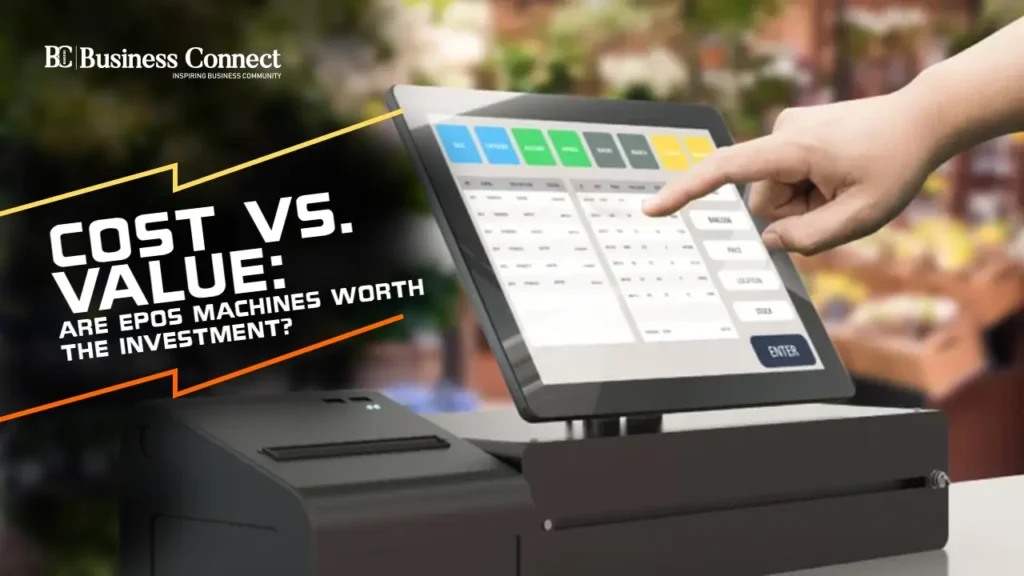As businesses increasingly shift towards digital transactions, electronic Point-of-Sale (ePoS) systems have emerged as vital assets in optimising operations. Offering far more than just a method of payment, these systems integrate inventory management, real-time analytics and seamless reporting. Yet, with any significant investment, it’s essential to weigh the financial commitment against the long-term value it promises. Are the costs of adopting an ePoS system truly justified by its benefits?
Let’s critically examine both the expenses involved and the advantages ePoS machine offer, providing a nuanced view to help you determine if this investment is truly worthwhile for your business.
What makes an ePoS machine valuable?
Rather than jumping straight into the financial details, let’s first understand what an ePoS machine has to offer.
- Efficiency at the point of sale
An ePoS machine is primarily designed to optimise and speed up the payment process. It supports card payments, mobile transactions and cash, making the checkout process quicker and reducing customer wait times. This improved efficiency not only enhances the customer experience but also increases turnover, particularly in sectors like retail and hospitality.
2. Inventory management made easy
The days of manually tracking inventory and calculating stock levels are behind us. An ePoS machine allows businesses to integrate inventory management directly into the sales process. Every time a transaction is made, the system updates stock levels automatically, ensuring accurate and real-time inventory tracking. This can help reduce errors, minimise overstocking and prevent stockouts, all of which can lead to significant savings in time and money.
3. Better insights with reporting features
One of the greatest advantages of an ePoS machine is its ability to provide real-time insights into business performance. Detailed reports can help business owners understand sales trends, customer buying behaviours and employee productivity. This data can inform decisions on stock purchases, promotional strategies and even staffing requirements, making it easier to optimise operations and maximise profits.
4. Enhanced customer experience
An ePoS machine enhances customer experience by doing more than processing payments. With integrated CRM features, it stores valuable customer data such as purchase history and preferences. This enables businesses to offer personalised recommendations and promotions based on individual customer needs.
By understanding customer habits, businesses can improve satisfaction, build loyalty and encourage repeat business, making the ePoS system an essential tool for strengthening customer relationships and driving growth.
Breaking down the costs of ePoS machines
Although the benefits of an ePoS machine are evident, the cost is often a major consideration for businesses. This section outlines the potential expenses associated with acquiring and maintaining an ePoS system.
- Initial setup costs
The upfront cost of an ePoS system varies based on its features and complexity. Basic systems are generally more affordable, while advanced systems with features like detailed reporting, inventory tracking and CRM offer even greater value at a higher price. In addition to the ePoS machine, businesses may need to purchase peripheral equipment, such as barcode scanners, receipt printers and cash drawers, which can increase the overall initial investment.
2. Subscription or licence fees
Many ePoS systems follow a subscription model, where businesses pay a monthly or annual fee for software access and updates. These fees typically vary based on the features needed. It’s essential to consider these ongoing expenses when calculating the total cost of ownership, as they contribute to the long-term investment in maintaining the system’s functionality and receiving regular updates.
3. Maintenance and support
It’s important to understand what’s included in your agreement, as unexpected maintenance costs could add up over time. While some vendors include technical support and software updates as part of the subscription fee, others may charge extra for these services.
4. Training costs
The cost of training staff to use the ePoS machine efficiently is another potential expense. Depending on the complexity of the system, you may need to invest in training programs or dedicated support to ensure that your team can operate the system efficiently. While many systems are user-friendly, there can still be a learning curve, especially if your staff is not familiar with digital technology.
Key considerations before investing
Investing in an ePoS system hinges on your business’s specific needs, budget and future growth goals. Here are some considerations before making your decision:
- Business size and type: Larger businesses with complex operations will likely see a better return on investment with an ePoS system due to its advanced capabilities.
- Budget: Assess whether your business can comfortably handle both the initial and ongoing costs associated with an ePoS machine.
- Features: Identify the features that matter most to your business. Do you require advanced inventory management, customer insights or real-time reporting? Make sure the system you choose aligns with these needs.
Improve the efficiency of your business
Choosing to invest in an ePoS machine is a practical step towards improving how a business runs on a daily basis. It reflects a focus on efficiency, better customer service and smarter decision-making through data. From speeding up transactions to offering better control over inventory, the right ePoS system can make a visible difference.
Providers like Pine Labs help businesses achieve this by offering reliable and easy-to-use technology. The real benefit comes when the system matches your specific business goals, helping you operate smoothly and grow steadily in a competitive market. Learn more at https://www.pinelabs.com/.
Add Business Connect magazine to your Google News feed



